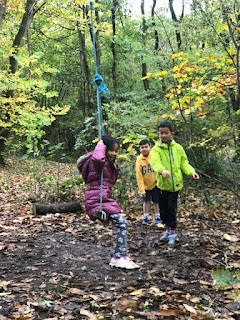Sweet Chestnuts foraging
 |
| Sweet chestnuts with prickly cases and tails |
October is the perfect time to forage for sweet chestnut in your local woods. They are tasty for savory or sweet dishes and highly nutritious for growing children.
Collecting Sweet Chestnuts
Conkers are mildly poisonous, therefore the last thing we want is to get horse chestnuts and sweet chestnuts mixed up. You tend to find fallen horse chestnuts starting in August through September, whilst chestnuts usually start falling towards the end of September. The key to identifying their difference is to look at their cases. Sweet chestnuts look green sea urchin while on the tree and usually turn brown by the time they fall. They are prickly and sharp to touch and always have a tail at the end of each nut.
Conkers have only short thorny cases, they are usually quite large and with no tails. It's not difficult to differentiate between the two when you know what to look for.




No comments:
Post a Comment